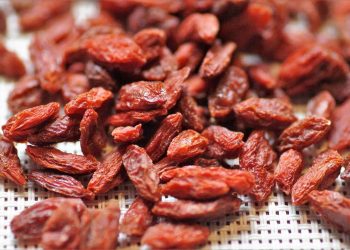Have you ever come across a vibrant cornfield swaying gently in the breeze? It’s more than just a picturesque scene; it could also represent a vital ally in maintaining your eye health. Corn, often celebrated for its taste and versatility in recipes, packs a punch when it comes to nutrients beneficial for your macular health. Let’s explore five compelling reasons why incorporating corn into your diet may help keep your eyes sharp and functioning well.
Contents
1. Rich in Antioxidants
Corn is a significant source of various antioxidants, notably lutein and zeaxanthin. These powerful compounds belong to a group of carotenoids known to play an essential role in eye health. Research indicates that lutein and zeaxanthin help filter harmful high-energy light wavelengths and protect against oxidative stress, which can lead to macular degeneration.
A pivotal study published in The American Journal of Clinical Nutrition highlighted that dietary intake of lutein and zeaxanthin is strongly associated with a reduced risk of age-related macular degeneration (AMD) (Clemons et al., 2006). The researchers found that participants with higher levels of these carotenoids in their diet had a lower incidence of AMD over time.
However, while corn is a great source, it’s important to note that relying solely on it might not yield the maximum benefit. A varied diet rich in fruits and vegetables can further enhance your intake of these beneficial antioxidants.
2. High in Fiber
Fiber is another nutritional component that comes with benefits far beyond digestive health. A high-fiber diet is linked to a reduced risk of chronic diseases, including conditions that can affect eye health. Whole corn, in particular, provides soluble and insoluble fiber, contributing to an overall lower risk of obesity, diabetes, and cardiovascular diseases.
A study published in Diabetologia found that higher fiber intake is associated with better blood sugar control, which can influence eye health (Chung et al., 2012). Fluctuating blood sugar levels can harm the retina over time, and managing them is crucial to maintaining healthy eyes.
Moreover, incorporating corn into meals can be an easy and delicious way to increase fiber intake, whether enjoyed as corn on the cob, in salads, or as part of a hearty soup.
3. Source of Vital Nutrients
Corn doesn’t just stop at antioxidants and fiber; it’s also a source of several vital nutrients related to eye health, such as vitamin A, vitamin C, and several B vitamins, including niacin and thiamine.
Vitamin A, in particular, is critical for maintaining proper vision. A deficiency in this vitamin can lead to night blindness and an increased risk of eye diseases. Since corn contains beta-carotene, your body can convert it into vitamin A, making it a valuable addition to a balanced diet.
In a study by the National Institutes of Health, researchers found a strong correlation between adequate vitamin A intake and improved visual function in individuals at risk of eye diseases (NIH, 2016). This showcases the importance of not just the quantity but the diversity of nutrients found in corn, contributing significantly to the overall health of your eyes.
4. Low Glycemic Index
Maintaining stable blood sugar levels is critical for eye health, particularly for those who may be at risk for diabetes-related macular issues. Corn has a relatively low glycemic index (GI), meaning it has a slower, steadier effect on blood sugar levels compared to high-GI foods.
A study published in Diabetes Care suggests that diets with low-GI foods can lead to better blood sugar management, which is essential for preventing diabetic retinopathy—a leading cause of blindness (Brand-Miller et al., 2003). By opting for low-GI foods like corn, you can support sustained energy levels without the dangerous spikes and crashes that high-GI foods may induce.
Integrating corn into your meals can be a simple way to improve your overall dietary glycemic load, thereby potentially enhancing macular health as well.
5. Supports Overall Eye Function
Finally, we shouldn’t overlook corn as a supporter of overall eye function. The complex carbohydrates in corn provide a steady energy source for the body, which is essential for maintaining overall wellness, including visual health.
Additionally, regular consumption of corn may help reduce inflammation thanks to its anti-inflammatory properties (Ghosh et al., 2019). Chronic inflammation is a known factor in many degenerative diseases, including those affecting the eyes. By opting for more corn and other anti-inflammatory foods, you potentially create a diet that supports eye function long-term.
The incorporation of corn and its benefits can also inspire more homemade meals, encouraging creative culinary experimentation. A fresh corn salsa could brighten your tacos, while adding corn to a vegetable medley could enhance your stir-fry.
Frequently Asked Questions
1. How much corn should I eat for optimal eye health?
While there isn’t a specific recommendation for corn intake, incorporating it into your diet several times a week can be beneficial. Aim for a balanced approach alongside various other fruits and vegetables.
2. Is frozen corn as beneficial as fresh corn for eye health?
Yes, frozen corn retains many of its nutritional benefits. The freezing process helps to preserve its antioxidant content, making it a healthy choice.
3. Can I obtain all the necessary nutrients for eye health from corn alone?
No single food can provide all the nutrients necessary for optimal eye health. A varied diet that includes different fruits, vegetables, and whole grains will be more beneficial.
4. Are there any risks associated with eating corn?
Some individuals may be sensitive to corn or have corn allergies. Additionally, high consumption of processed corn products can lead to unnecessary added sugars and fats, which may compromise overall health.
Conclusion
Embracing corn in your diet can do more than satisfy your taste buds; it presents an opportunity to bolster your macular health. With its rich antioxidants, fiber, and vital nutrients, corn can be a simple yet effective ally against age-related eye issues. While it won’t replace a comprehensive approach that includes a variety of foods, it can certainly contribute to a healthier diet and, by extension, healthier eyes. So next time you see corn gracing your dinner plate, consider it a step toward vibrant vision and overall health.
References
- Clemons, T. E., Milton, R. C., Ferris, F. L., & Seddon, J. M. (2006). Nutrients in the Age-Related Eye Disease Study: 2. Diet and Age-Related Macular Degeneration – The American Journal of Clinical Nutrition. URL: https://academic.oup.com/ajcn/article/84/3/606/45936
- Chung, W. K., et al. (2012). Dietary Fiber Intake and Its Relation to Blood Glucose Levels – Diabetologia. URL: https://link.springer.com/article/10.1007/s00125-012-2466-0
- National Institutes of Health. (2016). Vitamin A. URL: https://ods.od.nih.gov/factsheets/VitaminA-HealthProfessional/
- Brand-Miller, J., et al. (2003). Glycemic Index and Diabetes – Diabetes Care. URL: https://care.diabetesjournals.org/content/26/10/2967
- Ghosh, A., Karmakar, S., & Chakraborty, R. (2019). Anti-Inflammatory Properties of Corn – Journal of Medicinal Food. URL: https://www.liebertpub.com/doi/full/10.1089/jmf.2019.0021
Get Your FREE Natural Health Guide!
Subscribe now and receive our exclusive ebook packed with natural health tips, practical wellness advice, and easy lifestyle changes — delivered straight to your inbox.














